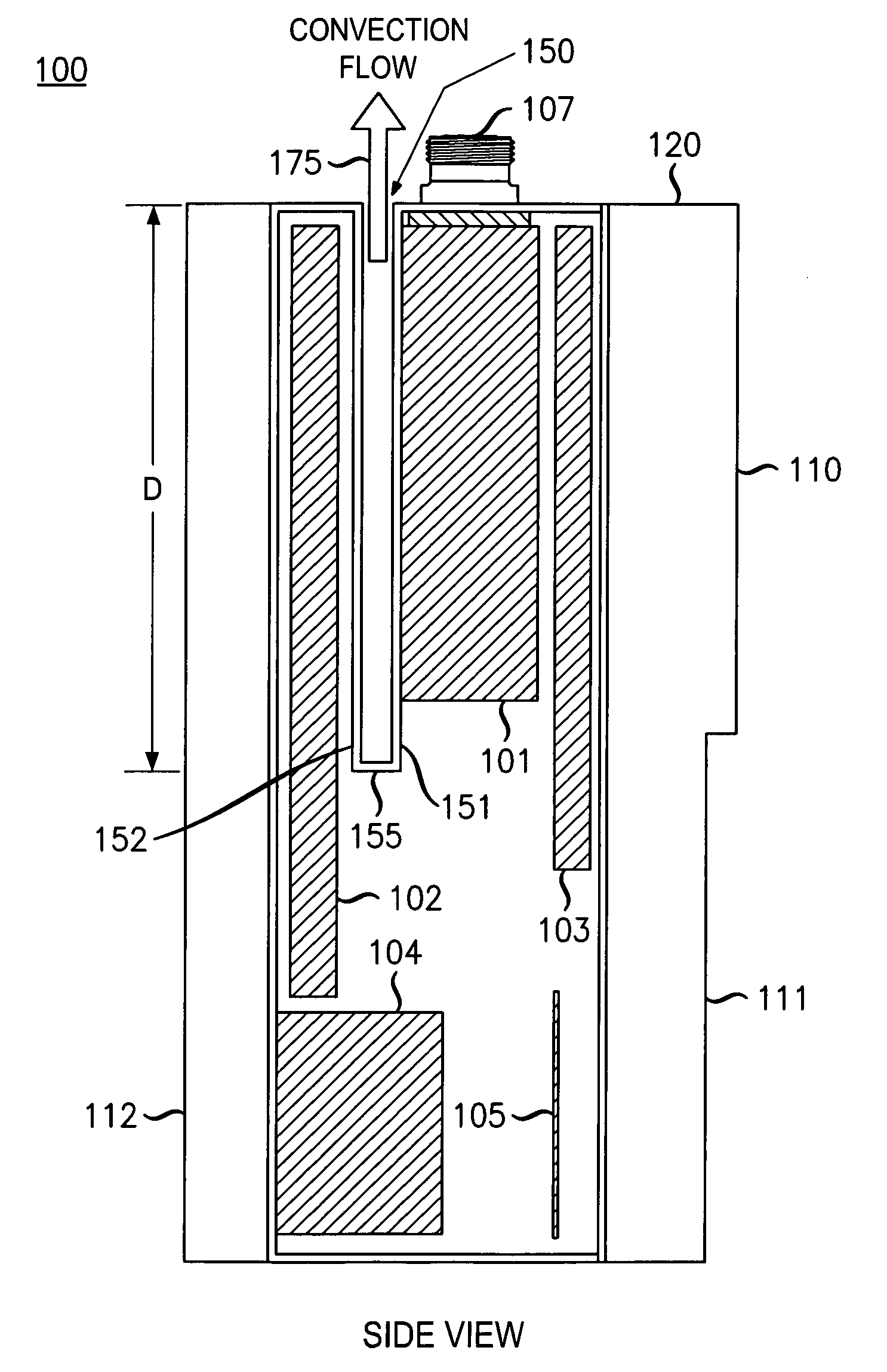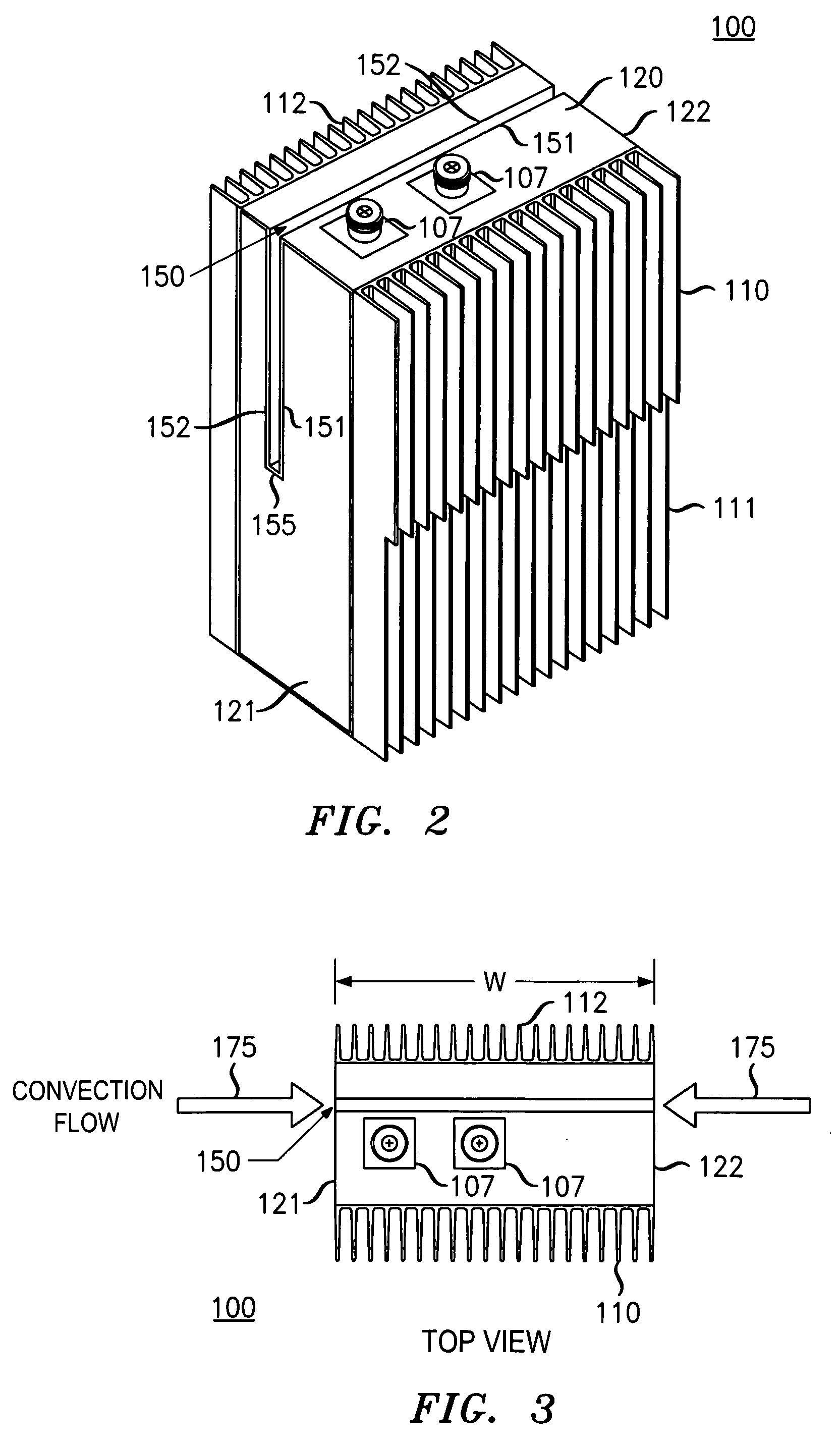Cooling arrangement for an equipment assembly
a technology for cooling arrangement and equipment, applied in the direction of cooling/ventilation/heating modifications, electrical devices, and modifications by conduction heat transfer, etc., can solve the problems of overheating components, component heat generation, and significant challenge in thermal management,
- Summary
- Abstract
- Description
- Claims
- Application Information
AI Technical Summary
Benefits of technology
Problems solved by technology
Method used
Image
Examples
Embodiment Construction
[0022]While the present disclosure is described, at least in some portions, in the context of telecommunications applications (e.g., a wireless base station), these examples are strictly meant to be illustrative only and not limiting in any way. In particular, the features related to the cooling arrangement described herein can be used in other non-telecommunications applications that include electronic, computer, and / or other equipment and components. Furthermore, the use of terminology such as equipment assembly, cabinet, enclosure, shelf, rack, bay, and so on, is not meant to be limiting. Rather, these terms may have equivalency and interchangeability in some contexts or, alternatively, simply illustrate the many different types of equipment housing configurations that can benefit from the cooling arrangement described herein.
[0023]FIG. 1 shows a side view of an equipment assembly 100 (with a side panel nominally removed) according to one illustrative embodiment. Equipment assemb...
PUM
 Login to View More
Login to View More Abstract
Description
Claims
Application Information
 Login to View More
Login to View More - R&D
- Intellectual Property
- Life Sciences
- Materials
- Tech Scout
- Unparalleled Data Quality
- Higher Quality Content
- 60% Fewer Hallucinations
Browse by: Latest US Patents, China's latest patents, Technical Efficacy Thesaurus, Application Domain, Technology Topic, Popular Technical Reports.
© 2025 PatSnap. All rights reserved.Legal|Privacy policy|Modern Slavery Act Transparency Statement|Sitemap|About US| Contact US: help@patsnap.com



